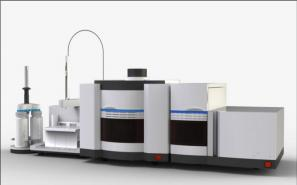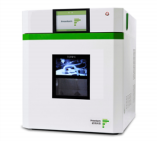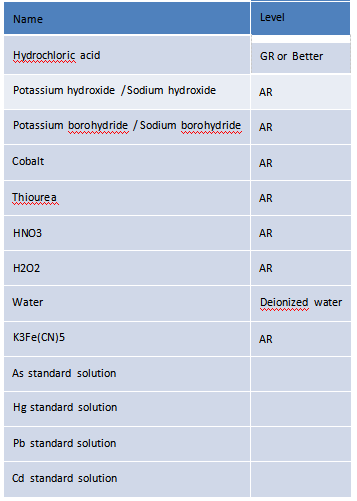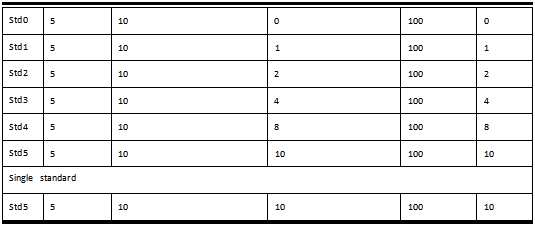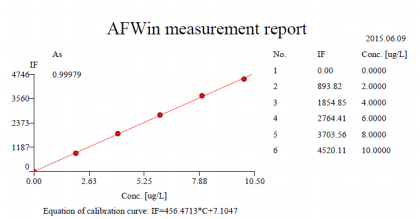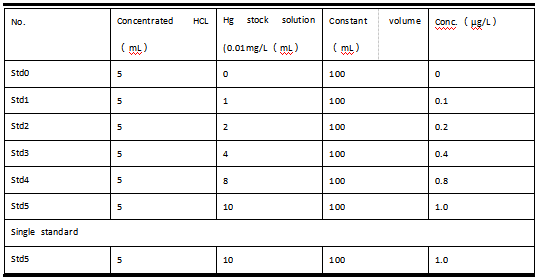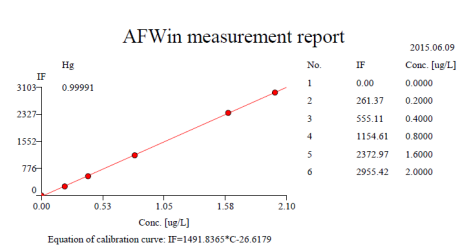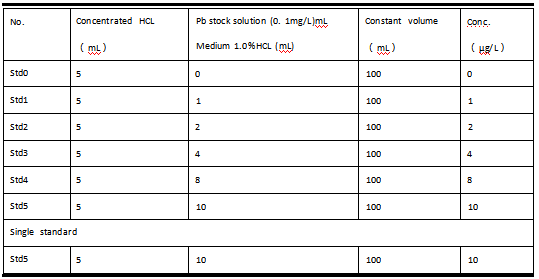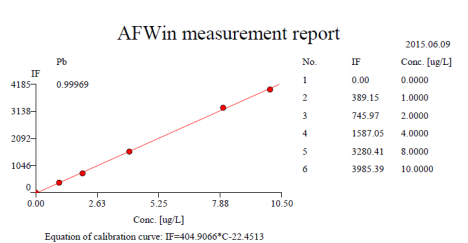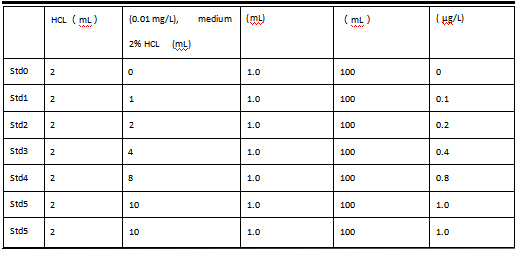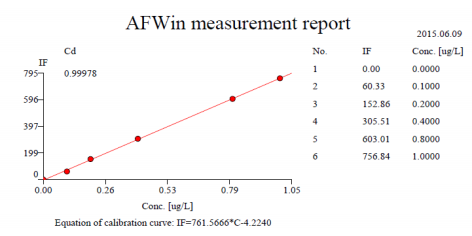When grown in contaminated soil, cannabis accumulates heavy metals to extent that it has been proposed as candidate for bioremediation of toxic waste sites. The American Herbal Products Association (AHPA) provides manufactures of herbal products with general recommendation for maximum heavy metals levels in herbal products, based on the daily product intake amount. PF7 heavy metal analyzer is a trace analysis equipment of heavy metal, which with same performance as ICP- MS for Hg, As, Cd, Pb analysis, but the running cost is much lower, but the operation is much easier than ICP- MS. Briefly PF7 has significant advantage and higher efficiency. Detect limit: As 0.01ppb, Cd 0.001ppb, Hg 0.001ppb, Pb 0.01ppb.
Metal limits recommended for herbal products in the US
Equipment and Reagent
Equipment:
PF7 Heavy Metal Analyzer, PERSEE ANALYTICS
TOPEX Microwave Digestion System, PERSEE ANALYTICS
Reagents:
Sample preparation
Crude cannabis plant
Take 0.25g powder sample into digestion tank, add 7ml of 65% HNO3 and 1 ml of 30% H2O2, set microwave digestion programs as follows:
Cannabis oil
Take 0.5g sample into digestion tank, add 8ml of 65% HNO3 for pre-treatment 30min, then add 2ml of 65% HNO3
and 1 ml of 30% H2O2, microwave digestion programs as follows:
Sample treatment after digestion
Take a digested sample, continue to heat on the hot block and concentrate to about 3 ml, cooling, with 2% HCL transferring to 25 ml volumetric flask, constant volume, shake, leave it for lead, cadmium detection. Take a digested sample, remove the acid on the hot block, transfer into the 25 ml volumetric flask, add 10 ml 10% thiourea, shake, dilute with 5% hydrochloric acid to mark, shake, place 30 min, leave it for arsenic detection. Take a digested sample, transfer into the 25 ml volumetric flask, dilute with 5% hydrochloric acid to mark, shake, leave it for mercury detection. Prepare reagent blank solution at same time.
Testing methods
Arsenic (As), can be tested together with Mercury (Hg) simultaneously Standard solution preparation
NOTE:
◎For total arsenic measurement, need add thiourea and ascorbic acid (Vc) to convert pentavalent arsenic to trivalent arsenic, then test total arsenic (trivalent arsenic), add thiourea and ascorbic acid is to pre-reduction and anti-jamming.
◎ Solubility of thiourea is very bad, especially in relatively lower ambient temperatures, you can use an electric heating plete or a ultrasonic cleaner to help dissolution.
◎ Have enough time to reduction reaction. It takes about 30min in summer, or put into a water bath at 60 C to accelerate reduction.
◎ Generally, It exists certain levels of arsenic in hydrochloric acid, in order to reduce blank value,
should notice the purity of hydrochloric acid.
Analysis parameters
Reducer: 0.5%KOH (NaOH)+1.0%KBH4(NaBH4)
Valence state: trivalent
Standard sample acidity: (3%~10%)(V/V) HCl
Carrier liquid: (3%~10%) (V/V) HCl
Measurement parameters:
Reading time (s): 15
Delay time(s): 4
Reading time: area
Measuring mode: standard curve
Sampling settings:
Distinguishing of blank: 4
The sample volume (mL): 1.0
Gas and temperature settings:
Flow rate of carrier gas (ml/min): 300
Flow rate of shelter gas (ml/min): 600
Atomizer temperature: 200
Ignite mode: Ignite
Negative voltage and lamp current:
Negative voltage (V): 280
A (B C) main current: 30
A (B C) minor current: 30
Reference calibration curve
Mercury (Hg), can be tested together with Arsenic (As) simultaneously Standard solution preparation
NOTE:
◎Usually, there is a certain amount of mercury in acid, especially in hydrochloric acid, and therefore must notice the test of the blank; reagent bottle is an important pollution source, it‘s better to treat with 10% nitric acid for 24h before use.
◎Adding 0.05% potassium dichromate into mercury stock solution is good for stock.
◎Mercury can be detected by flame (ignition) or cold atom method (no ignition), cold atom method
has high sensitivity, but poor stability, the flame method has better stability, a flame method is
recommended.
Analysis parameters
Reducer: 0.5%KOH (NaOH)+1.0%KBH4(NaBH4)
Valence state: trivalent
Standard sample acidity: (3%~10%)(V/V) HCl
Carrier liquid: (3%~10%) (V/V) HCl
Measurement parameters:
Reading time (s): 15
Delay time(s): 4
Reading time: area
Measuring mode: standard curve
Sampling settings:
Distinguishing of blank: 4
The sample volume (mL): 1.0
Gas and temperature settings:
Flow rate of carrier gas (ml/min): 300
Flow rate of shelter gas (ml/min): 600
Atomizer temperature: 200
Ignite mode: Ignite
Negative voltage and lamp current:
Negative voltage (V): 280
A (B C) main current: 30
A (B C) minor current: 30
Reference calibration curve
Lead (Pb)
Standard solution preparation
² NOTE:
◎It‘s strict requirement for acidity of lead, generally 1% ~ 2% (V / V)
◎pH value of reaction solution should strict control about 7.5。
Analysis parameters
Reducer: 0.5%KOH(NaOH)+1.0%KBH4(NaBH4)+1.0%K3Fe(CN)5
Valence state: divalent
Standard sample acidity: (2.0%)(V/V) HCl
Carrier liquid: (2%) (V/V) HCl
Measurement parameters:
Reading time (s): 15
Delay time(s): 4
Reading time: area
Measuring mode: standard curve
Sampling settings:
Distinguishing of blank: 5
The sample volume (mL): 1.0
Gas and temperature settings:
Flow rate of carrier gas (ml/min): 300
Flow rate of shelter gas (ml/min): 600
Atomizer temperature: 200
Ignite mode: Ignite
Negative voltage and lamp current:
Negative voltage (V): 280
A (B C) main current: 30
A (B C) minor current: 30
Reference calibration curve
Cadmium (Cd)
Standard solution preparation
² NOTE:
Cadmium can be detected with flame (ignition) or cold vapor method (no ignition), flame method has high sensitivity, but the corresponding noise is bigger, in the case of satisfied sensitivity, the cold vapor
method is better.
Analysis parameters
Reducer: 1%NaoH/KOH+2%KBH4/NaBH4
Standard sample acidity: (2.0%)(V/V) HCl
Carrier liquid: (2%) (V/V) HCl
Measurement parameters:
Reading time (s): 15
Delay time(s): 4
Reading time: area
Measuring mode: standard curve
Sampling settings:
Distinguishing of blank: 5
The sample volume (mL): 1.0
Gas and temperature settings:
Flow rate of carrier gas (ml/min): 300
Flow rate of shelter gas (ml/min): 600
Atomizer temperature: 200
Ignite mode: Ignite
Negative voltage and lamp current:
Negative voltage (V): 280
A (B C) main current: 40
A (B C) minor current: 40
Reference calibration curve
Reference
American Herbal Pharmacopoeia-Cannabis Inflorescence-2014


